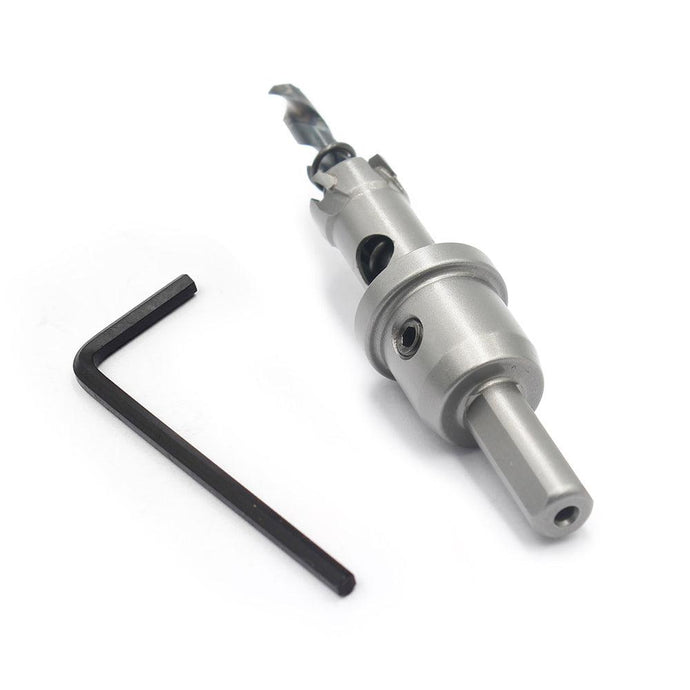- à¤?à¤?à¤1à¤?र à¤?à¤2à¤?à¤?, à¤aीà¤2ीà¤-ीत रà¥?à¤?, à¤?à¤?à¥?à¤?तनगर, à¤?रà¥?à¤2ी
- +91-8938008532
When it comes to cutting holes, selecting the right saw can make all the difference in achieving clean, accurate results. Whether you're a seasoned carpenter, a DIY enthusiast, or embarking on a home improvement project, understanding the various saws available and their respective capabilities is crucial. The ideal saw will depend on the material you are working with, the size and shape of the hole, and the specific application. This article explores the best saw options for cutting holes, helping you navigate the choices available to find the perfect fit for your needs.
One of the most popular tools for cutting holes in wood is the hole saw. Hole saws consist of a cylindrical saw blade with teeth on the edge, designed to cut through materials to create circular holes. They attach to a standard drill and come in a variety of diameters, making them ideal for tasks ranging from installing door knobs to creating holes for plumbing and electrical work. Hole saws are particularly effective for thin to moderately thick materials and can provide clean, precise cuts. Their versatility makes them a staple in many toolboxes.
For larger or more intricate holes, the bi-metal hole saw is often the best choice. Made from a combination of high-speed steel and a tougher alloy, bi-metal hole saws offer enhanced durability and longevity compared to standard steel versions. They can easily handle tougher materials, such as hardwoods or even light metals. This makes them an excellent option for professionals who frequently cut various materials and need a reliable tool that can withstand heavy use without losing cutting performance.
When it comes to cutting precise, clean holes in drywall, a keyhole saw - or drywall saw - proves invaluable. This saw features a pointed blade that allows users to start a cut in the middle of a sheet without the need for a pre-drilled hole. Its thin, serrated blade is excellent for maneuvering in tight spaces and making intricate cuts. Keyhole saws are ideal for cutting openings for electrical boxes, light fixtures, and vents, offering the precision necessary for drywall applications.
For those seeking to cut larger holes or shapes in thicker materials, a jigsaw may be the best tool. Jigsaws are versatile, equipped with a reciprocating blade that moves up and down to cut through a variety of materials, including wood, metal, and plastic. They can create both straight and curved cuts, making them perfect for projects requiring custom shapes. With the appropriate blade, jigsaws can handle tasks ranging from cutting out sink holes in countertops to creating decorative cutouts in wood. Their portability and ease of use further enhance their appeal for both professionals and hobbyists.
For an even more powerful option, consider a band saw. Band saws are capable of cutting intricate shapes and curves in thicker materials, making them suitable for more advanced woodworking projects. These saws feature a continuous loop of blade material that moves around two wheels, allowing for precise control over the cut. Band saws are particularly useful for cutting thick wood, resawing lumber, and making detailed cuts on larger workpieces. While they are often seen in professional shops, many hobbyists also invest in smaller, portable versions for their home workshops.
In situations where extremely precise and clean cuts are necessary, a CNC (Computer Numerical Control) router may be the best option. CNC routers are computer-controlled tools that can cut, carve, and engrave with remarkable accuracy. They are often used in industrial applications, but their growing accessibility has made them popular among serious DIYers and small businesses. A CNC router can create holes of any shape or size, offering endless possibilities for custom projects. However, they do require a steeper learning curve and a larger initial investment compared to traditional saws.
If you are working with metal, a plasma cutter is the tool of choice for creating holes. Plasma cutters utilize a high-velocity jet of ionized gas to cut through conductive materials like steel and aluminum with precision. While not a traditional saw, plasma cutters are highly effective for making holes in metal sheets and are widely used in fabrication and welding industries. For thinner materials, a dedicated metal hole saw or a step drill bit can also provide clean and efficient results.
When choosing a saw for cutting holes, it's essential to consider the material thickness and density, as well as the desired hole size and shape. Different saws are designed for specific tasks, and using the right tool will not only yield better results but also enhance safety during the cutting process. Additionally, investing in high-quality blades compatible with your saw will significantly impact cutting efficiency and longevity.
Safety should always be a priority when working with any saw. Ensure you wear appropriate protective gear, such as safety glasses and hearing protection, and maintain a stable work surface to secure the material being cut. Following the manufacturer's guidelines for tool use and maintenance will also prolong the life of your saw and improve cutting accuracy.
Ultimately, the best saw for cutting a hole depends on your specific needs, the material you are working with, and the type of cut required. From hole saws and jigsaws to CNC routers and plasma cutters, each tool offers unique advantages for various applications. By understanding these options and their capabilities, you can confidently select the right saw for your next project, ensuring precision, efficiency, and satisfaction in your work.
